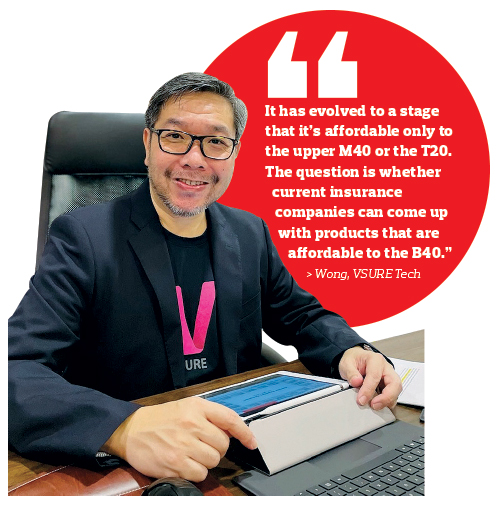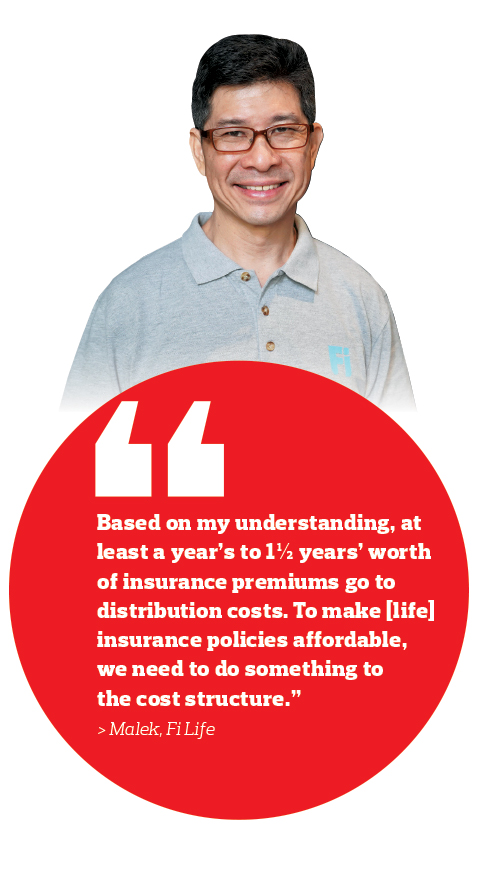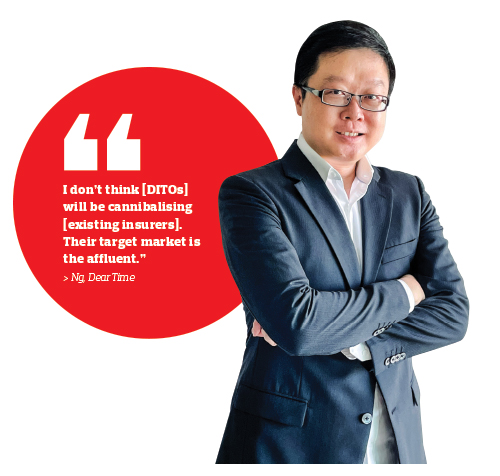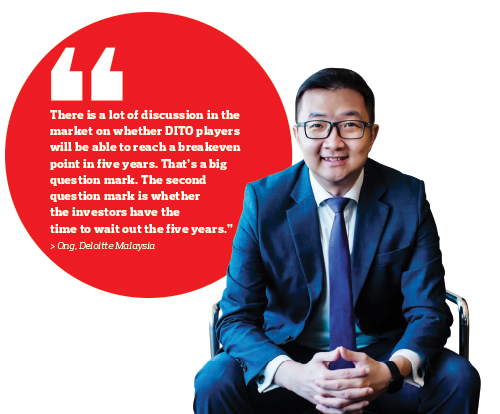
This article first appeared in Wealth, The Edge Malaysia Weekly on April 24, 2023 - April 30, 2023
A rather wide protection gap has been a constant thorn in the Malaysian insurance landscape. For instance, only 25% of working adults among the lower-income household have some form of life insurance/family takaful cover, far lower than the 59% of working adults in the general population.
Another case in point. Only 15% of small and medium enterprises (SMEs) have insurance cover, typically against fire and property damage risks, which seems low. These numbers are provided by Bank Negara Malaysia.
The consequences of having no insurance protection could be devastating. For example, countless SMEs have suffered from the severe flood at end-2021, and they could not claim any forms of insurance compensation.
These are among the main reasons that Bank Negara is calling for applications for digital insurers and takaful operators (DITO) licences after releasing its licensing and regulatory framework exposure draft last November.
Five licences are now up for grabs and the parties that are keen include insurance technology (insurtech) start-ups such as VSURE Tech Sdn Bhd (VSure), Fi Life Sdn Bhd and DearTime Bhd. All three start-ups also participated in the Bank Negara Regulatory Sandbox.
According to the central bank’s official website, the Regulatory Sandbox was launched in 2016 to “provide a regulatory environment that is conducive for the deployment of financial technology and facilitate overall innovation in the Malaysian financial sector”.
Also, these start-ups are likely to form a consortium with corporations, conglomerates, digital banks or with each other to meet Bank Negara’s capital and other requirements.
As the saying goes: Insurance is sold, not bought. It is believed that insurance policies, especially life insurance, are not off-the-shelf products that can be easily distributed. They could be technical, which requires that consumers have a certain level of knowledge and awareness to understand how they work. It is not an easy business to be in.
The local insurance industry is huge, however, and still growing. According to data analytics and consulting firm Global Data, it was worth RM73.11 billion in 2021 and is expected to hit RM109.64 billion by 2026 at a compound annual growth rate of 4.8%.
Solving the puzzle
As the name implies, DITOs are digital insurers that conduct their business fully online. Everything is conducted digitally, including product design, delivery of services and customer acquisition.
A main thrust behind DITO is that digitalisation can drive down business cost and prices of the insurance policies, making them more affordable to the man in the street, especially those in the lower-income segment.
Insurtech players say certain insurance policies these days, including life insurance presented in the form of investment-linked products, are priced too expensively and cater only for those in the higher-income group.
Eddy Wong, co-founder and CEO of VSure, says: “It has evolved to a stage that it’s affordable only to the upper M40 or the T20. The question is whether current insurance companies can come up with products that are affordable to the B40.”
Distribution fees, which are commissions paid to intermediaries, are a main cost factor that drives up the prices of life insurance policies, says Malek Ali, founder of Fi Life.
“Based on my understanding, at least a year’s to 1½ years’ worth of insurance premiums go to distribution costs. To make [life] insurance policies affordable, we need to do something to the cost structure,” he says.
It is no surprise, then, that insurance agents spend their time mostly selling policies in the cities to the affluent market. After all, the agents are required to meet their sales target, while taking care of the interest of their clients. There is little incentive for them to reach out to people in the remote areas.
“The agents are only human, with 24 hours a day. To get sales, they need to reach out to people in the affluent market,” says Jon Ng, founder and CEO of DearTime.
The overall business cost of insurers is also high, given their brick-and-mortar establishments and agency network, which make it much more challenging to lower pricing. This is where the smaller size and nimbler insurtech start-ups come into play. They may be more capable in using technology to design and distribute insurance products at a lower cost to the underserved.
Ng says DITOs that focus on the underserved markets should not be competing directly with existing insurers. “I don’t think [DITOs] will be cannibalising them. Their target market is the affluent. Hopefully, we will complement each other in that sense.”
In fact, the incumbents could also make a strategic move to collaborate with insurtech players to form a consortium for a DITO licence, says Justin Ong, financial services leader at Deloitte Malaysia.
“The incumbents are able to break outside their current operating model to do more to capture the market. They could be hindered by their existing core system, their existing processes. A new licence class will enable them to break the norm,” he says.
The different DITO applicants have different product plans to bring to the market in the event that they obtain the licence. DearTime wants to distribute affordable, simple and accessible life insurance and family takaful products; and Fi Life wants to focus on longer-term life insurance policies.
Malek foresees insurtech players moving into investment-linked insurance products, albeit with a different model. “Insurtech and fintech players might combine and offer an investment-linked product that has a different structure from what you have today,” he says.
“We will probably veer to the underserved. I would love to create more product innovation.”
VSure, on the other hand, aims to continue innovating in the on-demand pay per use space. Its focus areas include the mass market family takaful model and an affordable health insurance policy.
It is just the beginning
News of the DITO licences has created some excitement in the market, with various events being organised by consulting firms such as Deloitte. To vie for the licences, however, interested parties would have to meet Bank Negara’s requirements.
A challenge faced by insurtech start-ups is the minimum capital requirement of RM40 million to be eligible for the DITO licence. It is significantly lower than the RM100 million of digital banks, but still a huge sum for smaller companies.
Distributing life insurance and other insurance policies online will be an uphill task, as they are relatively complex products.
Digital insurers may also need to incur huge amounts of digital marketing cost and launch awareness campaigns, even though they can save on the commissions they would otherwise need to pay to distributors and insurance agents.
Among other things, DITO applicants are required to demonstrate a credible path to profitability in five years and an exit strategy in case things do not work out.
To meet all these requirements, DITO applicants are likely to form partnerships with parties that can add value to the new entities. Other than capital injection, these partners could be a super-app operator, such as Grab, or a digital bank that can distribute innovative insurance policies efficiently to its huge customer base. These partners will need to have the conviction and patience for the new entity to turn profitable in five years.
“There is a lot of discussion in the market on whether DITO players will be able to reach a breakeven point in five years. That’s a big question mark. The second question mark is whether the investors have the time to wait out the five years,” says Deloitte’s Ong.
At the time of writing, Fi Life and VSure were on the lookout for players to form a consortium.
“Is VSure credible enough to be the lead? Or can VSure become one of the key players of a consortium led by a bigger institution? These are the questions that we have to go through,” says Wong.
DearTime, on the other hand, has no plans to form a consortium. “In terms of running the business itself, we have the expertise. We are not looking into that for now. But we are not ruling out the possibility entirely,” says Ng.
Save by subscribing to us for your print and/or digital copy.
P/S: The Edge is also available on Apple's App Store and Android's Google Play.
- Malaysia won’t retaliate, will negotiate with US on tariffs — Miti
- Glovemakers rebound as investors see competitive advantages
- Thailand’s richest man picks bad day to debut flagship firm
- Malaysia's semicon firms brace for future US action after dodging tariffs
- Cover Story: Fatter dividends declared in FY2024 ahead of 2% dividend tax
- Russell hits bear market with small caps buffeted by tariff wave
- Oil slumps over 7% on Trump tariffs, Opec+ boosting output
- HHRG furniture unit seeks injunction to bar directors from accessing premises
- US senators seek to rein in Trump tariff authority
- Volkswagen to introduce 'import fee' on tariff-hit cars — WSJ




